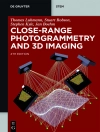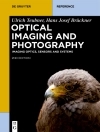Promoting the design, application and evaluation of visually and electrically effective LED light sources and luminaires for general indoor lighting as well as outdoor and vehicle lighting, this book combines the knowledge of LED lighting technology with human perceptual aspects for lighting scientists and engineers.
After an introduction to the human visual system and current radiometry, photometry and color science, the basics of LED chip and phosphor technology are described followed by specific issues of LED radiometry and the optical, thermal and electric modeling of LEDs. This is supplemented by the relevant practical issues of pulsed LEDs, remote phosphor LEDs and the aging of LED light sources. Relevant human visual aspects closely related to LED technology are described in detail for the photopic and the mesopic range of vision, including color rendering, binning, whiteness, Circadian issues, as well as flicker perception, brightness, visual performance, conspicuity and disability glare. The topic of LED luminaires is discussed in a separate chapter, including retrofit LED lamps, LED-based road and street luminaires and LED luminaires for museum and school lighting. Specific sections are devoted to the modularity of LED luminaires, their aging and the planning and evaluation methods of new LED installations. The whole is rounded off by a summary and a look towards future developments.
Spis treści
– Introduction
– The human visual system and its modeling for lighting engineering
– LED-components: Principles of radiation generation and packaging
– Measurement and modeling of the LED light source
– Photopic perceptual aspects of LED lighting
– Mesopic perceptual aspects of LED lighting
– Optimization and characterization of LED-luminaires for indoor lighting
– Optimization and characterization of LED-luminaires for outdoor lighting
– Summary
O autorze
Prof. Tran Quoc Khanh is University Professor and Head of the Laboratory of Lighting Technology at the Technische Universität Darmstadt in Darmstadt, Germany. He graduated in Optical Technologies from the Technische Universität Ilmenau. He obtained his Ph D degree in Lighting Engineering from the same University. He obtained his Degree of Lecture Qualification (Habilitation) from the same University for his thesis in Colorimetry and Color Image Processing. He gathered industrial experience as a project manager by ARRI Cine Technik in München (Germany). He has been the organizer of the well-known series of international symposia for automotive lighting (ISAL) in Darmstadt and a member of several Technical Committees of the International Commission of Illumination (CIE).
Dr. Peter Bodrogi is Senior Research Fellow at the Laboratory of Lighting Technology of the Technische Universität Darmstadt in Darmstadt, Germany. He graduated in Physics from the Loránd Eötvös University of Budapest (Hungary). He obtained his Ph D degree in Information Technology from the University of Pannonia in Veszprém, Hungary. He obtained his Degree of Lecture Qualification (Habilitation) from the Technische Universität Darmstadt in 2010 for his thesis on the optimization of modern visual technologies. He co-authored numerous scientific publications and invented patents about color vision and self-luminous display technology. He has been member of several Technical Committees of the International Commission of Illumination (CIE).
Chapter authors:
Andreas Groh, Stefan Brückner, Quang Trinh Vinh and Dmitrij Polin, Laboratory of Lighting Technology of Darmstadt Technical University, Germany.
Dr. Holger Winkler, Merck KGa A in Darmstadt, Germany.
Dr. Holger Sprute, Lead Engineer Licht & Sicht, Bertrandt AG in Darmstadt, Germany.












